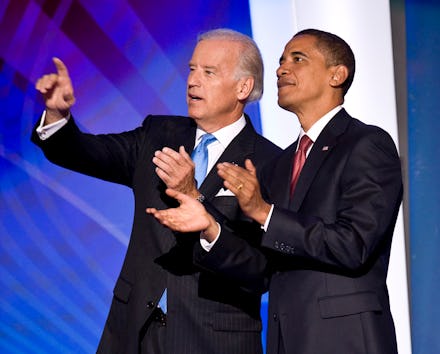How much power does a vice president really have? It's complicated

In 1793, John Adams wrote to his wife Abigail that the vice presidency was "the most insignificant office that ever the invention of man contrived or his imagination conceived." Daniel Webster, who served as secretary of state, was offered the position and responded, "I do not propose to be buried until I am dead.” In 2012, a CNN article argued that being the vice president was akin to being one of Kim Kardashian's siblings — you get all of the benefits of being in the family, but no one actually knows your name. Now, all eyes are on Joe Biden, a former veep himself and now the presumptive Democratic nominee for president, as to who he'll choose as his administration's No. 2. He, of all people, knows just how much power a vice president actually has.
Biden has consistently said he will choose a woman as his running mate, which some people have applauded as a first step in the direction of gender parity in the executive branch. A litany of female political leaders have been suggested as possible options to join him at the top of the ticket.
But just how much influence would these women have in a Biden administration? Whoever Biden chooses would have three concrete duties outlined in the Constitution. First, as the president of the Senate, the vice president can cast tie-breaking votes if the Senate is split evenly on a vote. The second duty is to fulfill the duties of the president if he has to step down or dies; this is called the "presidential order of succession." The third responsibility is to accept the final tally of electoral votes in December, when the electoral college convenes to cast their votes for president based on the results on Election Day.
Completing three duties over the course of a four-year term is hardly what many would call thrilling. "The vice president has essentially no power unless the president dies," says Lonna Atkeson, a professor of political science at the University of New Mexico. "Really, it's just a post in waiting." Biden, for his part, rather famously told President Barack Obama that he would only accept the VP nod if he was given real responsibility in the position.
There's a big power for the vice president that isn't outlined in the Constitution, though: the power to influence voters. A vice presidential candidate can help to legitimize a presidential candidate, lend credibility, or attract hesitant voters from certain regions of the country who may not feel represented. Indeed, you'll often see presidential candidates choose vice presidents to communicate a complementary — but not identical — message to voters. Obama chose Biden, for example, "to complement the deficits of Obama's experience," Atkeson tells Mic. "Obama wasn't looking for someone who was representative of the party."
In 2016, Democratic nominee Hillary Clinton chose Virginia Sen. Tim Kaine because he wouldn't overshadow her, Atkeson says. Kaine was in fact regarded as a safe choice at the time, while then-candidate Donald Trump's choice of Mike Pence was also seen as a way for the firebrand reality star to balance the ticket with an understated, lifelong conservative.
While in office, though, the vice president can help shape policy goals and execute strategy by leveraging relationships with lawmakers on Capitol Hill or in other branches of government. Biden often touts his role selling Obama's signature Affordable Care Act to Congress, and he's repeatedly mentioned his relationships with other politicians as an advantage he possesses. But this collaborative relationship between president and vice president wasn't always the norm in the White House, Atkeson says. Take the second Bush administration, which she quips was more like the Bush-Cheney administration given that Vice President Dick Cheney wielded "a lot of power."
There's no outline as to what the day-to-day of a vice president looks like, so each one has typically shaped their role to meet the messaging and legislative needs of the particular president they're serving with. Every administration has their own legislative agenda they want to accomplish while they're in office. Just as Biden helped Obama pass comprehensive health care reform, Dan Quayle, George H.W. Bush's vice president, played an active role in meeting with foreign leaders and using his network in the Senate to pass legislation. President Bill Clinton, the elder Bush's successor, "assigned [Vice President Al] Gore very specific things, and he was one of the first presidents to actually sort of formally use their vice president," Atkeson says. "It was more of a strategic partnership in terms of votes."
When not directly lobbying lawmakers on behalf of the president, a vice president can be an effective alternate messenger for the administration, making speeches or developing relationships with international heads of state. But the more they're on the road, Atkeson says, the more they run the risk of being left out of policy decisions. She explains that President Harry S. Truman, who served as President Franklin Delano Roosevelt's vice president before taking over after his death, famously "didn't even know about the [atomic] bomb when he became president. He was the one who ended up using it."
Of course, the vice presidency is seen perhaps most of all as the natural on-ramp to the presidency. Being in the public eye for one or two terms builds national name recognition, which is critical to running for the nation's highest office. Fourteen former vice presidents went on to become president, half of whom entered the West Wing after the death of a president. We'll have to wait until November to see whether Biden can become the 15th.